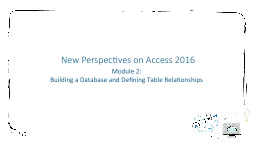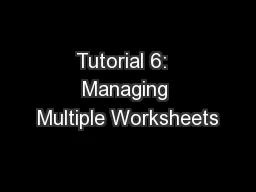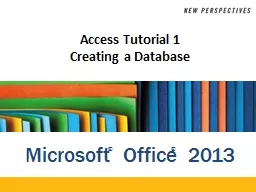PPT-New Perspectives on Microsoft Access 2016
Author : celsa-spraggs | Published Date : 2018-10-24
Module 2 Building a Database and Defining Table Relationships Session 21 Learn the guidelines for designing databases and setting field properties Create a table
Presentation Embed Code
Download Presentation
Download Presentation The PPT/PDF document "New Perspectives on Microsoft Access 20..." is the property of its rightful owner. Permission is granted to download and print the materials on this website for personal, non-commercial use only, and to display it on your personal computer provided you do not modify the materials and that you retain all copyright notices contained in the materials. By downloading content from our website, you accept the terms of this agreement.
New Perspectives on Microsoft Access 2016: Transcript
Download Rules Of Document
"New Perspectives on Microsoft Access 2016"The content belongs to its owner. You may download and print it for personal use, without modification, and keep all copyright notices. By downloading, you agree to these terms.
Related Documents














